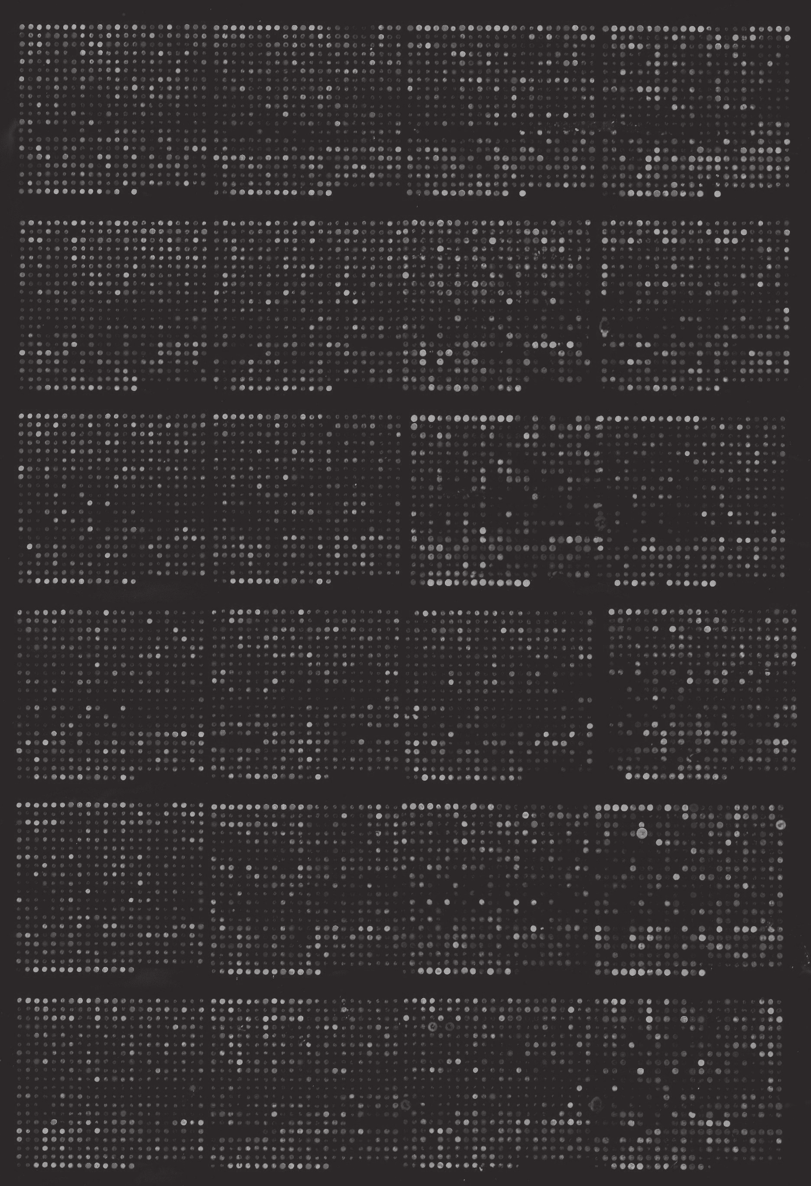students need to learn that science intersects
a variety of ways and at a variety of points in
with life in many ways.
an individual teacher’s curriculum, we believe
the most appropriate mechanism for assessing
In this module, students have a variety of
student learning is one that occurs informally
opportunities to discuss, interpret, and evaluate
at various points within the activities, rather
basic science and public health issues in the
than something that happens more formally, just
light of values and ethics. Many issues that
once at the end of the module. Accordingly, we
students will encounter—especially those
have integrated a variety of specific assessment
having to do with individual susceptibility to
components throughout the lessons. These
disease and personal decisions that various
embedded assessment opportunities include
people might make about genetic testing and
one or more of the following strategies:
medical treatment—are potentially controversial.
• performance-based activities (for example,
How much controversy develops will depend
structured discussions of potentially
on many factors, such as how similar your
controversial issues);
students are with respect to socioeconomic
• oral presentations to the class (for example,
status, perspectives, value systems, and religious
role playing); and
preferences. It will also depend on how you
• written assignments (for example, answering
handle your role as facilitator. Your language
questions or writing magazine or newspaper
and attitude factor into the flow of ideas and
articles, letters, and short reports).
the quality of exchange among the students.
These strategies allow you to assess a variety of
The following guidelines may help you think
aspects of the learning process, such as students’
about how to guide your students in discussions
prior knowledge and current understanding,
that balance factual information with values.
problem-solving and critical-thinking skills,
• Remain neutral. Neutrality may be the single
level of understanding of new information,
most important characteristic of a successful
communication skills, and ability to synthesize
discussion facilitator.
ideas and apply understanding to a new situation.
12
• Encourage your students to discover as much
• Acknowledge all contributions in the same
information about the issue as possible. Ask
evenhanded manner. If the class senses that
questions that help your students distinguish
you favor one idea over another, you will
between those components of an idea or issue
inhibit open debate and discussion. For
that scientific research can answer and those
example, avoid praising the substance or
that are a matter of values. Maintaining this
content of comments. Instead, acknowledge
distinction is particularly important as
the willingness of students to contribute by
students discuss the issues about genetic
making comments such as, “Thanks for that
testing raised in Lesson 5. Students should
idea” or “Thanks for those comments.” As you
understand the importance of accurate
display an open attitude, a similarly accepting
information to any discussion and should
climate will begin to develop within the class.
recognize the importance of distinguishing
• Create a sense of freedom in the classroom.
factual information from opinions.
Remind students, however, that freedom
• Keep the discussion relevant and moving
implies the responsibility to exercise that
forward by questioning or posing appropriate
freedom in ways that generate positive
problems or hypothetical situations. Encourage
results for all.
everyone to contribute, but do not force
• Insist on a nonhostile environment in the
reluctant students into the discussion.
classroom. Help your students learn to
• Emphasize that everyone must be open to
respond to ideas instead of to the individuals
hearing and considering diverse views.
presenting those ideas.
• Use unbiased questioning to help students
• Respect silence. Reflective discussions
critically examine all views presented.
are often slow. If you break the silence,
• Allow for the discussion of all feelings
your students may allow you to dominate
and opinions.
the discussion.
• Avoid seeking consensus on all issues.
• Finally, at the end of the discussion, ask
This is particularly important in Lesson 5.
your students to summarize the points
The multifaceted issues that the students
they and their classmates have made. Let
discuss result in the presentation of divergent
students know that your respect for them
views, and students should learn that this
does not depend on their opinion about
is acceptable.
any controversial issue.
• Keep your own views out of the discussion.
If your students ask what you think, you may
wish to respond with a statement such as,
“My personal opinion is not important here.
We want to consider your views.”
13
Implementing the Module

Using the Student Lessons
The heart of this module is the set of five lessons,
In Advance provides instructions for collecting the
which we hope will carry important concepts
materials, photocopying, and other preparations
related to disease and public health to your
needed for the activities in the lesson.
students. To review the concepts in detail, refer
to Table 1 in “Implementing the Module” (page 3).
Procedure outlines the lesson’s steps and provides
implementation suggestions and answers to
Format of the Lessons
questions. Annotations in the margins, identified
As you scan the lessons, you will find that each
by icons, provide specific hints about
contains several major features.
helping students see connections
At a Glance gives you a convenient summary
between basic science and personal
of the lesson.
and public health,
• The Overview provides a short summary
of what students do.
assessing student understanding,
• Major Concepts states the central idea(s)
and
the lesson is designed to convey.
• Objectives list three to five specific
understandings or abilities students should
focusing students’ attention on the
have after completing the lesson.
lesson’s major concepts during its
• Prerequisite Knowledge alerts you to the
closing steps.
understandings and skills students should
have before beginning the lesson.
Other icons indicate
• The Basic Science–Health Connection
describes how the lesson illustrates the
when to use the Web site (see “Using
relationship between basic science and personal
the Web Site” for instructions; a
and public health. The mission of NIH is
print-based alternative is provided for
to “uncover new knowledge that will lead
classes that don’t have access to the
to better health for everyone.” This mission
Internet) and
statement recognizes that basic science and
personal and public health are not separate
the beginning of a print-based
issues; they are not even two sides of one issue.
alternative version.
Rather, they are inextricably linked and form
a powerful whole: Research into the basic
processes of life leads inevitably to strategies
Potential Extensions describes ways you can
for improving health, and questions about
extend or enrich the lesson.
health trigger research into basic processes.
• The Introduction places the lesson in a
context and provides a short overview of
its key components.
15

Human Genetic Variation
The Lesson Organizer at the end of each lesson
provides a quick view of the steps of each activity,
including icons that notify you when you will
need to make masters and transparencies and
when there’s an online component.
All the Masters required to teach the lessons are
in a separate section at the end of the module.
Lessons 2 and 5 ( The Meaning of Genetic Variation
and Making Decisions in the Face of Uncertainty)
use materials on the Human Genetic Variation
Web site. Lesson 3 ( Molecular Medicine Comes of
Age) includes a Web-based option for teachers
who wish to use it. For information about the site,
see “Using the Web Site” on page 17. If you do not
have enough computers with Internet access, you
can use the print-based alternatives.
Figure 2. A Möbius strip is a one-sided, one-edged loop.
Test this by making a paper loop with five twists. With a
Timeline for Teaching the Module
marker, draw a continuous line around the strip, starting
The suggested timeline (Table 7) outlines a plan
at the seam. Your line should pass along “both” sides
for completing the five lessons. The plan assumes
of the paper before you return to your starting point,
that your class periods are 45 to 50 minutes and
even though you do not lift your marker off the paper
that you will teach the lessons on consecutive
as you draw. Then, run your marker along the edge,
days. It’s important to review the timeline before
again starting at the seam. You should see that the strip
teaching the module. Instructions for setting
also contains only one edge. Loops with odd numbers
up computers are under “Using the Web Site”
of twists are Möbius strips; loops with even numbers of
(page 17) and online at http://science.education.nih.
twists are not. In this module, we use a Möbius strip as
gov/supplements/genetic/teacher and for preparing
a metaphor for the relationship between basic science
other materials, under In Advance in each lesson.
and personal and public health.
Table 7. Suggested timeline for teaching the module.*
Timeline
Activity
3 weeks ahead
(Optional) Reserve computers and bookmark the Web site.
Collect supplies.
1 week ahead
Copy masters.
Make transparencies.
Day 1
Lesson 1
Day 2
Lesson 2 (Day 1)
Day 3
Lesson 2 (Day 2)
Day 4
Lesson 3
Day 5
Lesson 4
Day 6
Lesson 5
* Assuming class periods of 45 to 50 minutes.
16
Using the Web Site
The Web component of Human Genetic Variation is
Collaborative Groups
a wonderful tool that you can use to help organize
We designed all the activities in this module
your use of the module, engage student interest in
to be completed by groups of students working
learning, and help orchestrate and individualize
together. Although individual students working
instruction. The site features simulations,
alone can complete many of the steps, this
illustrations, and videos that articulate with the
strategy will not stimulate the types of student-
lessons. To access the curriculum’s home page,
student interactions that are part of active,
go to http://science.education.nih.gov/supplements/
collaborative, inquiry-based learning. Therefore,
genetic. (If your classes don’t have access to
we recommend that you organize collaborative
the Internet, you can use the print alternatives
groups of between two and four students each,
included with the lessons.)
depending on the number of computers available.
If necessary, up to six students may work as
The Web site includes the following resources:
a group, although the students may not be as
• information about the National Institutes of
involved in the activity. Students in groups
Health and National Human Genome Research
larger than this are likely to have difficulty
Institute;
organizing the student-computer interactions
• printable files of this module;
equitably. This can lead to one or two students’
• printable files of the print-based alternatives
assuming the primary responsibility for the
for Lessons 2 and 5;
computer-based work. Although large groups
• a video documentary and a reference database
can be efficient, they do not allow all students
for Lesson 2;
to experience the in-depth discovery and analysis
• optional video clips in support of Lesson 3; and
that the Web site was designed to stimulate.
• the video clips and reference database for
Group members not involved directly may
Lesson 5.
become bored or disinterested.
Hardware and Software Requirements
If you are teaching all five lessons as a unit,
The Web site can be accessed with any computer
we recommend that you keep your students
browser. Adobe Flash Player should be installed
in the same collaborative groups for all the
on the hard drive of each computer that will
activities. This will allow each group to develop
access the site. It’s freely available at http://get.
a shared experience with the Web site and
adobe.com/flashplayer/.
with the ideas and issues the activities present.
A shared experience will also enhance your
Getting the Most out of the Web Site
students’ perceptions of the lessons as a
The ideal use of the Web site requires one
conceptual whole. This will be particularly
computer for each student group. However, if you
important in the activities toward the end
have only one computer available, you still can
of the module, as students consider some of
use the site. For example, you can use a projection
the ethical and logistical complexities associated
system to display the monitor image for the whole
with our growing knowledge about human
class. If you do not have access to the Web site,
genetic variation.
you can use the print-based alternative provided
for each Web activity.
If your student-to-computer ratio is greater than
six students to one computer, you will need to
17
Human Genetic Variation
change the way you teach the module from the
Web Activities for People with Disabilities
instructions in the lessons. For example, if you
The Office of Science Education provides access
have only one computer available, you may want
to the Curriculum Supplement Series for people
students to complete the Web-based work over
with disabilities. The online versions of this series
an extended time period. You can do this several
comply with Section 508 of the Rehabilitation Act.
ways. The most practical one is to use your
If you use assistive technology (such as a Braille
computer as a center along with several other
or screen reader) and have trouble accessing
centers at which students complete other activities.
any materials on our Web site, please let us
In this approach, students rotate through the
know. We’ll need a description of the problem,
computer center, eventually completing the
the format in which you would like to receive
Web-based work you have assigned.
the material, the Web address of the requested
material, and your contact information.
A second way to structure the lessons if you only
have one computer available is to use a projection
Contact us at
system to display the computer monitor onto a
Curriculum Supplement Series
screen for the whole class to see. Giving selected
Office of Science Education
students in the class the opportunity to manipulate
National Institutes of Health
the Web activities in response to suggestions and
6100 Executive Boulevard, Suite 3E01
requests from the class can give students some of
Bethesda, MD 20892-7520
the same autonomy in their learning they would
or
have gained from working in small groups.
supplements@science.education.nih.gov
18

Understanding Human Genetic Variation
Genetics is the scientific study of inherited
knowledge about human sex chromosomes that
variation. Human genetics, then, is the scientific
was gained through the study of patients with
study of inherited human variation.
sex chromosome abnormalities. A more current
example is our rapidly increasing understanding
Why study human genetics? One reason is simply
of the mechanisms that regulate cell growth and
to understand ourselves better. As a branch
reproduction, which we have gained primarily
of genetics, human genetics concerns itself
through a study of genes that, when mutated,
with what most of us consider to be the most
increase the risk of cancer.
interesting species on earth: Homo sapiens. But
our interest in human genetics does not stop at
Likewise, the results of basic research inform
the boundaries of the species, for what we learn
and stimulate research into human disease. For
about human genetic variation and its sources
example, the development of recombinant DNA
and transmission inevitably contributes to our
techniques (Figure 3) rapidly transformed the
understanding of genetics in general, just as the
study of human genetics, ultimately allowing
study of variation in other species informs our
understanding of our own.
A second reason for studying human genetics
is its practical value for human welfare. In this
sense, human genetics is more an applied science
than a fundamental science. One benefit of
studying human genetic variation is the discovery
and description of the genetic contribution to
many human diseases. This is an increasingly
powerful motivation in light of our growing
understanding of the contribution that genes make
to the development of diseases such as cancer,
heart disease, and diabetes. In fact, society has
been willing in the past and continues to be willing
to pay significant amounts of money for research
in this area, primarily because of the perception
that such study has enormous potential to improve
human health. This perception and its realization
in the discoveries of the past 30 years have led to
a marked increase in the number of people and
organizations involved in human genetics.
This second reason for studying human genetics
is related to the first. The desire to develop
medical practices that can alleviate the suffering
associated with human disease has led to strong
support for basic research. Many basic biological
phenomena have been discovered and described
Figure 3. Microarrays, sometimes called gene chips,
during the course of investigations into particular
provide snapshots of all the genes that are active in a cell
disease conditions. A classic example is the
at a particular time.
19
Human Genetic Variation
scientists to study the detailed structure and
researchers to study DNA directly. Before the
functions of individual human genes, and to
development of these techniques, scientists
manipulate these genes in a variety of previously
studying human genetic variation were forced
unimaginable ways.
to make inferences about molecular differences
from the phenotypes produced by mutant genes.
A third reason for studying human genetics is
Furthermore, because the genes associated with
that it gives us a powerful tool for understanding
most single-gene disorders are relatively rare,
and describing human evolution. At one time,
they could be studied in only a small number
data from physical anthropology (including
of families. Many of the traits associated with
information about skin color, body build, and
these genes are also recessive and so could not be
facial traits) were the only source of information
detected in people with heterozygous genotypes.
available to scholars interested in tracing human
Unlike researchers working with other species,
evolutionary history. Today, however, researchers
human geneticists are restricted by ethical
have a wealth of genetic data, including molecular
considerations from performing experimental,
data, to draw on in their work.
“at-will” crosses on human subjects. In addition,
human generations are on the order of 20 to
How Do Scientists Study Human
40 years, much too slow to be useful in classic
Genetic Variation?
breeding experiments. All these limitations made
Two research






